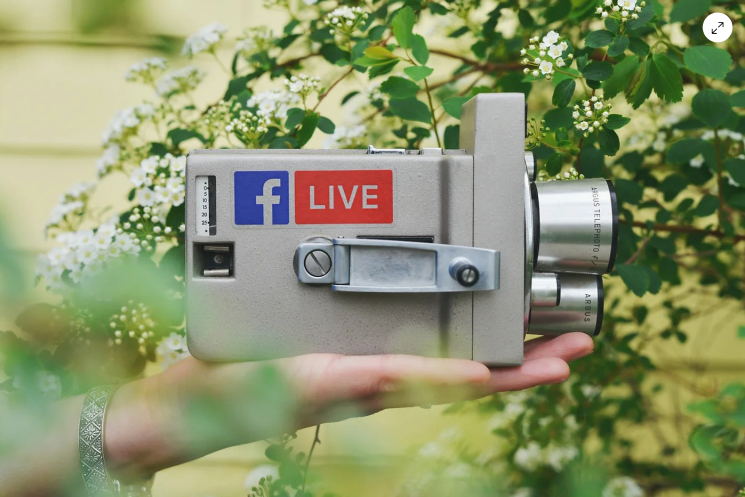Creating content is only half the battle; optimising that content for different platforms is where the real strategy lies.
Each social media platform, website, or channel has its own set of rules, audience expectations, and technical requirements. To maximize your content’s reach and effectiveness, it’s crucial to tailor your strategy for each platform. This article will guide you through optimising your content for various platforms, ensuring you connect with your audience in the most impactful way.
Understanding Platform-Specific Audiences The first step in optimising content for different platforms is understanding the audience that frequents each one. Not all platforms attract the same demographic, and your content needs to reflect this.
- Facebook: A versatile platform with a broad user base, Facebook is ideal for longer-form content that encourages discussion. It’s great for community-building and sharing detailed articles, videos, and updates.
- Instagram: Visually driven, Instagram caters to a younger audience that values aesthetics and storytelling through images and short videos. Content should be visually striking and concise, often leveraging hashtags to increase visibility.
- LinkedIn: A professional network, LinkedIn is best for B2B content, thought leadership, industry news, and professional development. Content here should be polished, informative, and cater to professionals looking to improve their careers or business operations.
- Twitter: Twitter’s fast-paced, real-time nature is perfect for news updates, brief insights, and engaging in trending conversations. Tweets should be concise, engaging, and often include hashtags and mentions to expand their reach.
- YouTube: The go-to platform for video content, YouTube caters to long-form videos, tutorials, vlogs, and educational content. It’s ideal for building a subscriber base and providing value through in-depth video content.
- TikTok: Short, entertaining videos dominate TikTok. The platform favours creativity, trends, and content that can quickly capture attention, making it ideal for brand awareness and engagement with a younger audience.
Tailoring Content Formats Each platform supports different content formats, and optimising for these is key to ensuring your message is delivered effectively.
- Videos: Videos should be tailored in length and format depending on the platform. For instance, YouTube supports longer, detailed videos, while Instagram and TikTok require shorter, snappier clips. Consider aspect ratios as well—vertical for Instagram Stories and TikTok, horizontal for YouTube and Facebook.
- Images: High-quality images are essential, but their dimensions should be optimised for each platform. Square images work best on Instagram, while landscape images are more suitable for Facebook and LinkedIn.
- Text Content: The length and style of your text should vary by platform. Long-form articles are perfect for LinkedIn, whereas Twitter demands brevity. Always include a strong call-to-action (CTA) tailored to the platform’s user behaviour.
- Infographics: These are effective on platforms like Pinterest and LinkedIn, where educational and shareable content thrives. Ensure infographics are clear, concise, and optimised for readability across different devices.
Leveraging Platform Features Each platform offers unique features that can enhance your content’s visibility and engagement.
- Hashtags: On platforms like Instagram and Twitter, hashtags can significantly increase your content’s reach. Research relevant and trending hashtags to include in your posts to tap into broader conversations.
- Stories and Reels: Instagram and Facebook Stories, along with Instagram Reels, are perfect for temporary content that feels urgent and immediate. Use these features to share behind-the-scenes content, quick updates, or promotions.
- Live Streaming: Live videos are a great way to engage directly with your audience. Platforms like Facebook, Instagram, and LinkedIn offer live streaming options, which can be used for Q&A sessions, product launches, or real-time updates.
- Polls and Surveys: Engage your audience directly through polls and surveys. Twitter and Instagram’s polling features can be used to gather quick feedback, gauge interest, or drive engagement.
SEO and Discoverability Optimising your content for search engines (SEO) is essential for discoverability on platforms like YouTube, LinkedIn, and even Facebook.
- Keywords: Conduct keyword research to identify terms your audience is searching for. Incorporate these keywords naturally into your content, titles, and descriptions to improve visibility.
- Titles and Descriptions: Craft compelling titles and descriptions that include your primary keywords. These should be concise yet informative, giving users a clear idea of what to expect from your content.
- Tags and Categories: On platforms like YouTube, use tags and categories to help algorithms understand your content and suggest it to relevant users.
Measuring and Analysing Performance To refine your content strategy, regularly analyse the performance of your content across platforms.
- Platform Analytics: Use built-in analytics tools on platforms like Facebook Insights, Twitter Analytics, and YouTube Analytics to track engagement, reach, and conversions. Pay attention to metrics like watch time, click-through rates, and audience demographics.
- A/B Testing: Experiment with different content formats, posting times, and CTAs. A/B testing helps identify what resonates most with your audience, allowing you to optimize future content.
- Audience Feedback: Pay attention to comments, shares, and direct feedback from your audience. This qualitative data is invaluable for understanding how your content is perceived and where improvements can be made.
Adapting to Trends and Changes Social media platforms and digital channels are constantly evolving, and your content strategy should be flexible enough to adapt.
- Stay Informed: Keep up with changes in platform algorithms, new features, and emerging trends. Being an early adopter of new formats or trends can give your content a competitive edge.
- Flexibility: Be prepared to pivot your strategy as needed. What works on one platform may not work on another, and audience preferences can shift over time.
- Content Repurposing: Adapt existing content for different platforms to maximize its lifespan. For example, a blog post can be turned into a LinkedIn article, a series of tweets, or an infographic.
Conclusion Optimising your content strategy for different platforms is essential for maximising your reach, engagement, and impact. By understanding the unique characteristics of each platform and tailoring your content accordingly, you can effectively connect with your audience wherever they are. Remember, the key is to remain flexible, continuously measure performance, and be willing to adapt your strategy as platforms evolve. With a optimised content strategy, you’ll not only enhance your brand’s visibility but also build stronger, more meaningful connections with your audience.





